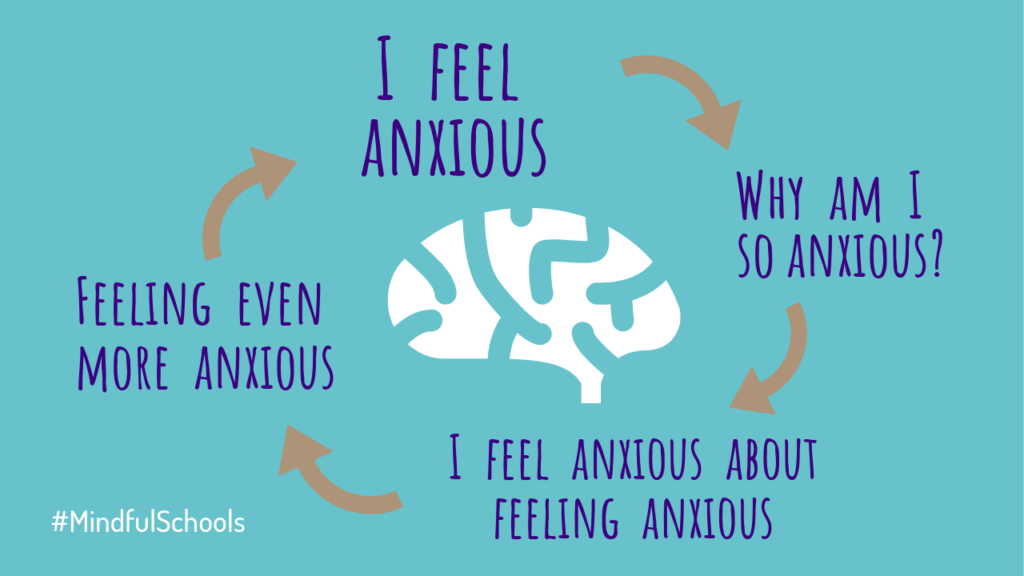As the seasons change, we may feel excited about a number of things such as being outside, enjoying the company of good friends, or considering what types of seeds to plant. For some, the changes can make us feel anxious as we may be facing new challenges, changes in work or family dynamics. For teachers and students the changing season might mean it’s test taking time.
Listen to our Practice of the Month on Anxiety and read more below. We’ll explore anxiety, in particular, anxiety overload.
Anxiety disorders are the most prevalent of all mental illnesses found within the American culture. Anxiety disorders affect more than 40 million adults or 18% of the U.S. population every year. Although the process of anxiety is a universal human experience and occurs in all cultures, diagnosable anxiety appears to affect Western society, in particular us Americans, more than other cultures.
How is anxiety different from stress?
How can we discern between the two? How can we use mindfulness practice to better manage and understand them?
In general, stress is a response to an external cause, such as a difficult deadline at work or an argument with a close friend. With stress, the experience will typically decrease in intensity once the situation is over. Because stress is caused by external causes. To learn more, read our recent blog on stress.
Anxiety is our specific reaction to stress. Its origin is in our internal experience within our thoughts and emotions. Anxiety can be characterized by a “persistent feeling of apprehension, anticipation and dread” often in situations where there is no actual threat. Unlike stress, anxiety persists even after the experience has passed. It lingers quietly and incessantly in the background of our mental chatter.
For example, if you have an argument with a friend where you said something hurtful and find yourself feeling guilty and stuck ruminating about what you should have said instead, or how you are going to repair, or how they needed to hear it, and how they never listen to you and on and on… this is the very nature of anxiety.
Anxiety is typically accompanied by the experience of rumination. Rumination is defined as going over and over the same thought or a problem without coming to a conclusion. It’s like a vicious hamster wheel that we just can’t seem to get off. It seems the longer we are on it, the harder it becomes to get off. Sound familiar?
Anxiety overload: When the external demands collide with our habitual reactions. At times we may find ourselves confronted by this scenario. Whether it’s the anticipation of taking a test, walking into a difficult meeting at work, or knowing that you’re about to have a difficult conversation with our supervisor. In these situations it may seem as though our bodies disappear as our attention becomes absorbed into our thinking minds–flooded by worry, anticipation, suspicion and a range of mental states based on our common habits of mind associated with anxiety.
3 strategies for practicing mindfulness when you’re experiencing anxiety
In these moments there are a few things we can do to bring ourselves back to our senses.
- Recognize that your attention has been pulled into rumination and over-thinking and shift your attention into the body, breathing, or any other sense experience. Sound can be very anchoring in these moments.
- During formal mindfulness, see if you can begin to identify common types of thinking that you get caught up in.
- Begin to identify your common themes associated with anxiety, such as: worry, guilt, defensiveness or so forth.
Working with anxiety can take time and patience as we develop a mindfulness practice. Remembering to meet yourself with kindness–as you begin to uncover and work with the universal experience of anxiety–will be a supportive ally.

